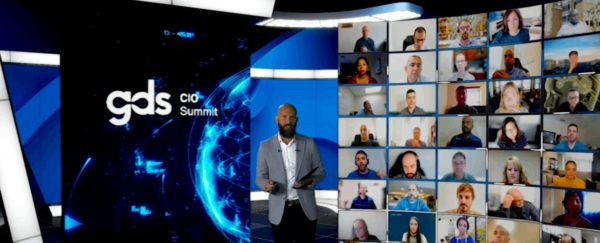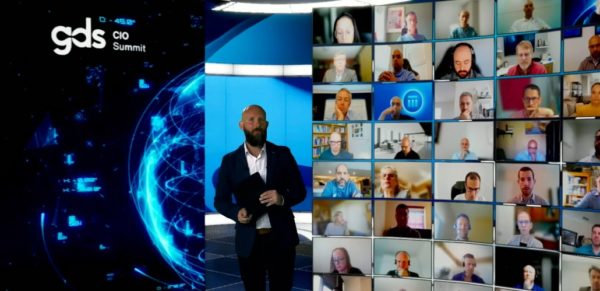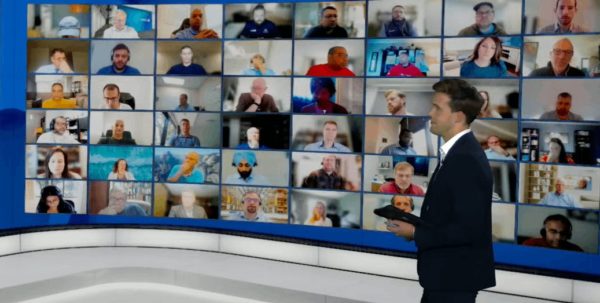Thanks to their proximity to innovation, tech leaders are often amongst the most influential c-suite members both internally and externally. Internally, we depend on CIOs, CTOs and CISOs to help us to commit effectively to the cutting edge. Externally – think Mark Zuckerberg, Jeff Bezos, Steve Jobs –these leaders are renowned for their service to innovation. The importance of the senior technical leader is only growing and it’s something that we can expect to continue.
Since 2020, constant innovation has been essential to day-to-day operations, and this has foregrounded the importance of effective technological leadership. However, cracks are beginning to show thanks to some legacy issues. Consequently, more and more senior technologists are having to incorporate new skillsets into their roles to ensure ongoing success. Increasingly, it is the skillset of the CHRO that technologists are drawing upon to become better leaders.
How to Become a Better Leader in Tech
Tech leaders must alter their approach in 2022, not only to foster inclusivity but to aid retention and talent acquisition. It was on this topic that Meredith Harper – Vice President & Chief Information Security Officer for Eli Lilly & Co – spoke at GDS’ Security NA Summit. As part of her discussion, Meredith stressed the importance of both talent and DE&I to help improve leadership approaches.
Diversity, Equity & Inclusion
DE&I has become a crucial today’s workplace and notably, for the workplace too. As Glassdoor reported, 76% of employees and job seekers see a diverse workforce as an important factor when evaluating companies. As McKinsey revealed in 2020, diverse companies perform better, hire better talent, have more engaged employees, and retain workers better than companies that do not focus on diversity and inclusion. When it came to DE&I, Meredith defined room for improvement in two key areas.
Ethnic Diversity
Tech leaders need to encourage greater ethnic diversity in their teams as the majority of us are falling behind. For example, a total of 68% of business leaders feel that there is a lack of diversity in their tech workforce. That this is still the case in 2022 is unacceptable. This was supported by Meredith’s experiences; “when I entered into the industry almost 30 years ago, I saw absolutely no one who looked like me. “A workplace cannot have diversity of thought until it has diversity of people. This is why it’s vital that we improve equality across our tech teams and wider business.
As Meredith outlined, “it’s important for me to see folks who look like me but then also be the visual for those who come into the industry and who may not see a woman, may not see a minority in these spaces and then show them the art of the possible.” Ethnic diversity isn’t something you should pursue for the sake of profit, it’s something to pursue because it’s the right thing to do.
Gender Diversity
Just 22% of tech leadership positions in Fortune 500 companies are held by women. This finding from Boardroom Insiders’ on the tech industry isn’t surprising, it’s depressing. Unfortunately, women are still working against several misconceptions that prevent them from getting to the next stage of their career. As Meredith established, the most obvious is that “for some reason, people think that women can’t be technical leaders, I don’t know where that came from. Is it changing? I believe that it is, but it’s not happening at a pace that is satisfactory for me.”
This problem persists as many falsely believe that our work here is finished and as Meredith indicated, “I still run into colleagues, whether in my company or outside it, who still believe that there’s no problem, who still believe that women or minority populations are fully represented.”
We can only improve ethnic and gender diversity in the workplace if we reject this thinking. As Meredith put it, “we have to have a full-scale acknowledgement across the industry that this is a challenge”. Only then can we find a solution. The scope for this change at this time is huge and as Meredith concluded, “I think we’re being incredibly lazy if we choose not to take advantage of this opportunity.”
Talent
The Great Resignation is real, and employees are leaving work in record numbers. Throughout 2021, approximately 38 million Americans left their jobs, with around 4.4 million departing in September alone. This represents both a problem and an opportunity, particularly for those in the tech sector. On the one hand, there are a great number of technologists up for grabs than ever before, on the other, our employees could well be the ones planning to leave.
“We can’t keep doing the same things that we’ve been doing for 30 years and think we’re going to get different results, that’s the definition of insanity.” To this end, we need to alter our approach. As Meredith suggests, rather than wait for talent to come to us, “what we can do differently is actually go where the diverse talent is.”
What this means for us is that we need to do our own research. As tech leaders we need to define the qualities we’re looking for in candidates and go after that however we can. If there are certain schools, businesses or conventions which regularly generate the talent we’re looking for, leaders need to know. As Meredith suggested, “if we are still going to the same institutions, universities, conferences where there isn’t a large population of diverse talent and we’re expecting to find it there, it’s not going to happen.“
45% of employers said that they couldn’t find the workers with the skills that they needed in 2021. This is likely because these employers lacked a truly intentional strategy when it came to talent.
How to Become a Better Leader in Tech
Senior technologists must mimic the skillset of the CHRO if they wish to drive the change we need in the sector. By tackling the issues, we face in DE&I and talent we can not only help to improve the lives of our employees at work but also futureproof our workplaces for the years to come.
GDS Summits are tailored 3-day virtual event conferences that bring together business leaders and solution providers to accelerate sales cycles, industry conversations and outcomes. Regarding the Security Digital Summits 88% of Solution Providers said the overall experience of the Digital Summit they attended was Above Average or Excellent and 88% of Solution Providers said they would be interested in sponsoring future events.
For more, click here to hear from attendees on how GDS has helped them to achieve their business outcomes.
Continue the debate at GDS’ Security Digital Summits where we bring together senior security executives who are actively seeking to share, learn, engage, and find the best solutions.
Apply to Attend












